Type Fritter Place of origin India | Course Breakfast Region or state South India | |
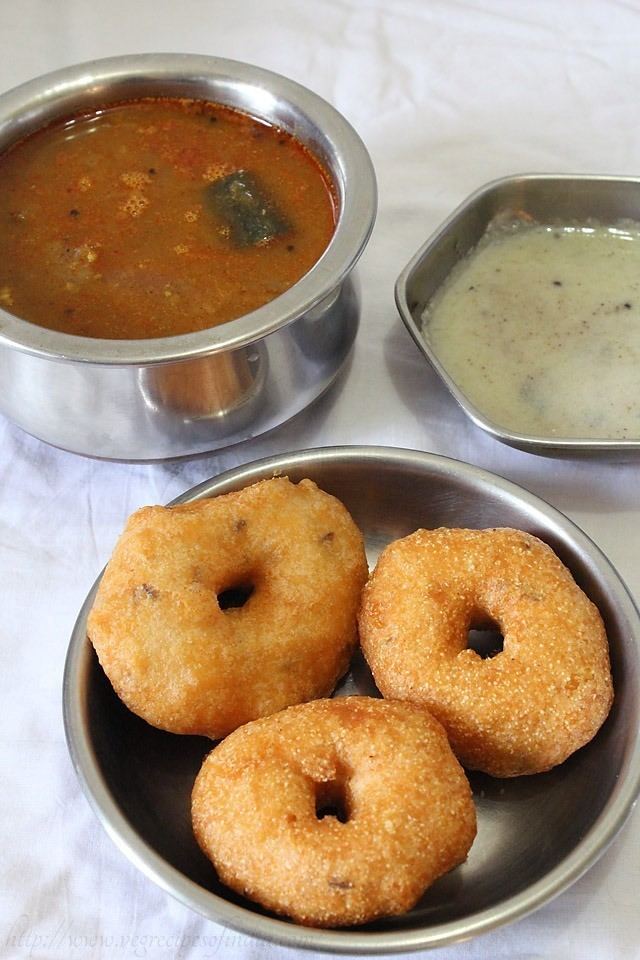 | ||
Alternative names Uddina vade, Medhu vada, Minapa garelu, Uzhunnu vada, Ulundu vadai, Urad vada, Ulundu wade Similar Vada, Coconut chutney, Dahi vada, Uttapam, Masala dosa | ||
Medu vada recipe ulundu vadai urad dal vada by healthy food kitchen
Medu vada ([meːd̪ʊ vəɽaː]; literally "soft vada") is an Indian fritter made from Vigna mungo (black lentil or urad dal). It is usually made in doughnut-shape, with a crispy exterior and soft interior. A popular food item in the South Indian and Sri Lankan cuisines, it is generally eaten as a breakfast or a snack.
Contents
- Medu vada recipe ulundu vadai urad dal vada by healthy food kitchen
- Medu vada ulundu vadai indian food
- Etymology
- History
- Preparation
- Serving
- References
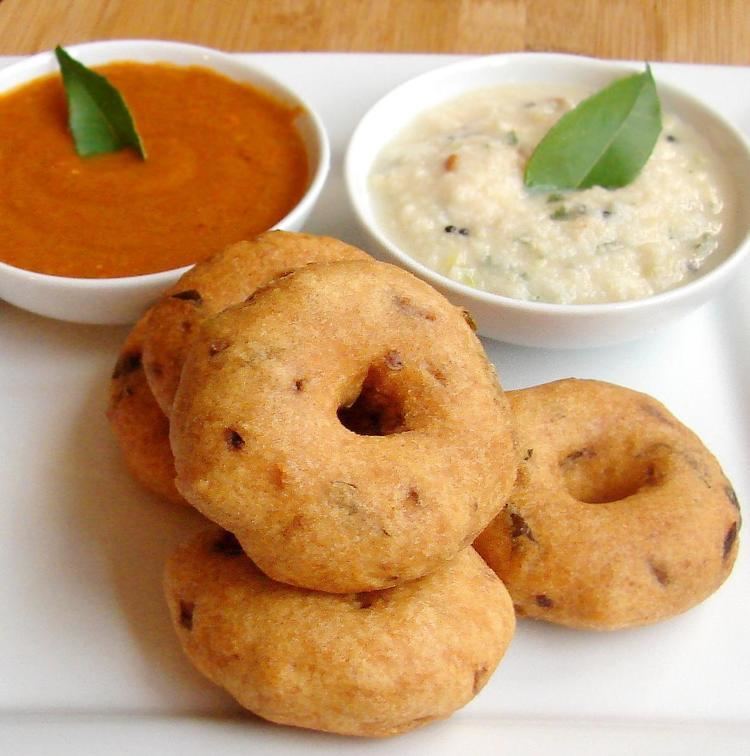
Medu vada ulundu vadai indian food
Etymology
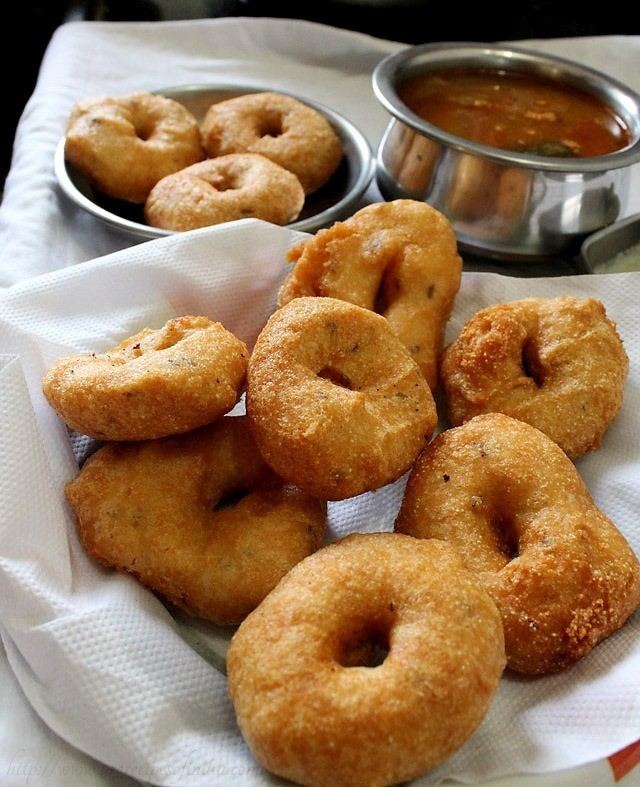
"Medu" is the Kannada word for "soft"; "medu vada" thus literally means "soft fritter". The dish is often mentioned simply as "vada" on menus.
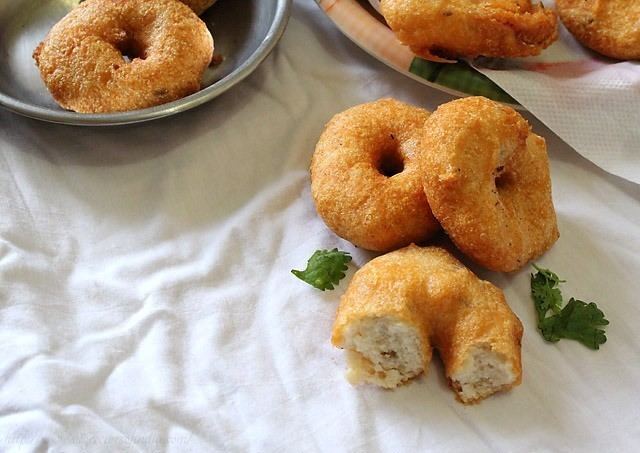
Other names for the dish include urad vada, medhu vadai, ulundu vadai (Tamil), garelu (Telugu), and uzhunnu vada (Malayalam).
History
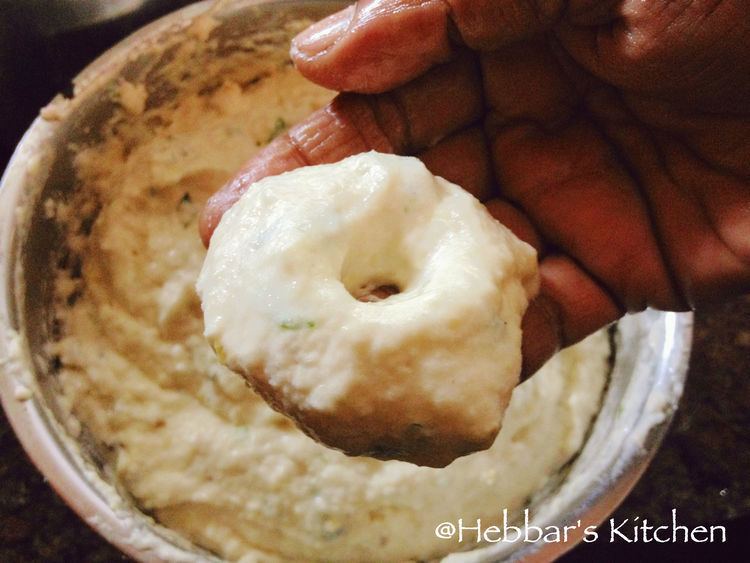
According to Vir Sanghvi, the origin of medu vada can be traced with "some certainty" to the Maddur town in present-day Karnataka. The dish was made popular outside South India by Udupi restaurateurs of Mumbai.
Preparation
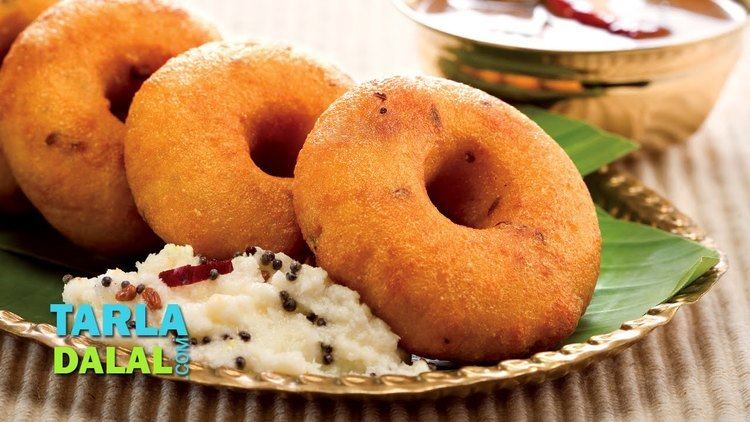
The medu vada is made primarily of black lentils (urad dal) batter. The black lentils are soaked in water for several hours, and then ground to a paste. The paste may be flavoured with other ingredients such as asafoetida, methi seeds (fenugreek), ginger, cumin seeds, black pepper, curry leaves, chillies and coconut pieces. It is then patted into doughnut-shapes and fried in oil until golden brown.
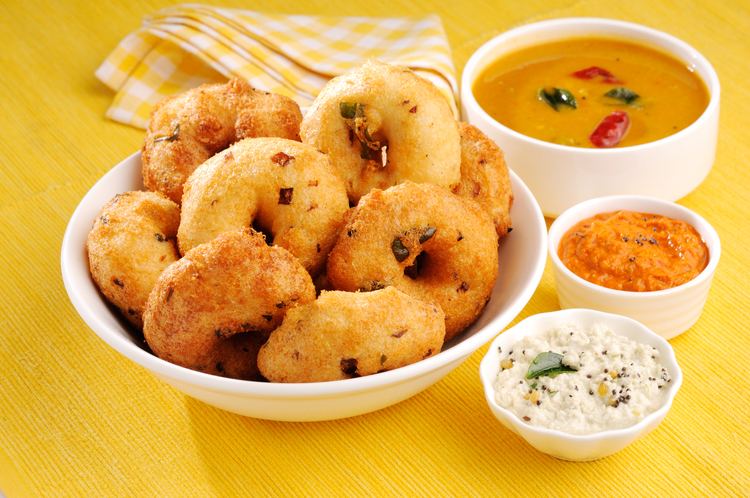
One variation involves baking instead of frying. Other variations of the dish involve use of pulses other than black lentils. For example, am-bada (or aama vadai) is made with chana dal (split chickpea lentil); occasionally, tuar (pigeon pea) and masoor (lentil) are also used.
Serving
The dish is usually served with sambar (split pea stew) and coconut chutney. Along with idli, it is often eaten as a breakfast. It is also eaten as a lunch starter or a snack.
The medu vada is sometimes also served with yogurt, as a chaat snack (see dahi vada).
